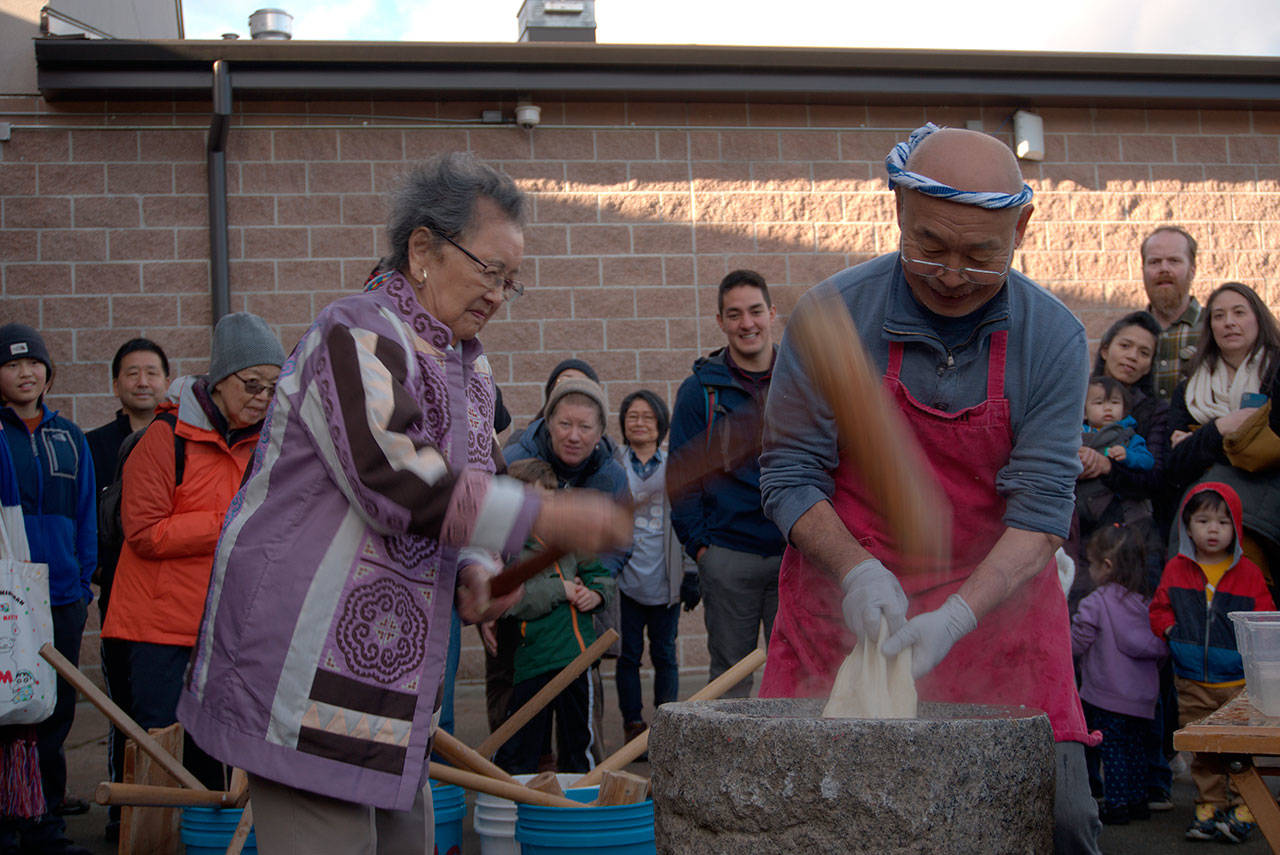The annual Bainbridge mochi tsuki event, reportedly the largest of its kind in the country and now in its 31st year, returned to Woodward Middle School Saturday, Jan. 4.
Last year marked the first time the gathering was held at Woodward, the latest home of this storied island tradition.
According to the Bainbridge Island Japanese American Community, the now-iconic mochi gathering began as a small informal New Year’s celebration at the former Bainbridge Cleaners, in Winslow. It quickly grew in popularity, however, and moved to Island Center Hall. After a few years, it grew even bigger and moved again to the Filipino American Community Hall.
In 2004, IslandWood hosted their first mochi tsuki celebration, where it was held ever since — until last year, when the move to Woodward became the newest chapter in the history of the gathering, and a localized addition the historical saga of mochi making.
For more than 1,000 years, making and eating the sweet rice treat mochi has been a celebrated New Year’s tradition in Japan, with generations of families and communities coming together to wish good health and prosperity for the new year.
Traditional mochi pounding, hand-forming mochi, origami folding and a BIJAC informational display were again featured at this year’s Bainbridge event, along with a special “passing of the mallet” ceremony honoring “Master Mochi Pounder” and longtime unofficial face of the occasion Shoichi Sugiyama.
“I wouldn’t call it a retirement,” said BIJAC President Clarence Moriwaki. “Shoichi’s been with us since 2003.
“We are basically thanking Shoichi for all these years of service,” he added. “He can stay as long as he wants; he’s the star.”
Sugiyama’s smiling visage is a ubiquitous aspect of nearly all news coverage of the island gathering, Moriwaki said, though he was temporarily sidelined not long ago after suffering a serious injury during a work-related accident.
“Fortunately, they had immediate care and, amazingly, he came back,” Moriwaki said. “He had his arm in a sling, guiding people; he’s Iron Man.”
Attendees Saturday were once more invited to participate in preparing batches of mochi made in the centuries-old method.
The island event routinely draws a sizable crowd from far and wide, eager not only to make mochi but to learn about the story of the Japanese internment and the unique response of most islanders — protecting their neighbor’s possessions and property, calling for their release, and ultimately eagerly welcoming them home again.
“Occasionally we have people come who are my age, in their 60s, and they never knew that there was a Japanese American incarceration,” Moriwaki said. “But what I find most amusing is almost every year we find someone from Japan who will come, and they’ve never pounded mochi in their lives. And I’ve asked them, ‘Where do you get mochi?’ ‘The supermarket.’
“It’s hilarious,” he said, “but that’s cool because it shows that what we’re doing here has value. Even for people from Japan, where this tradition has been around for more than 1,000 years, we’re giving them their first exposure. The irony of that just kills me.”



